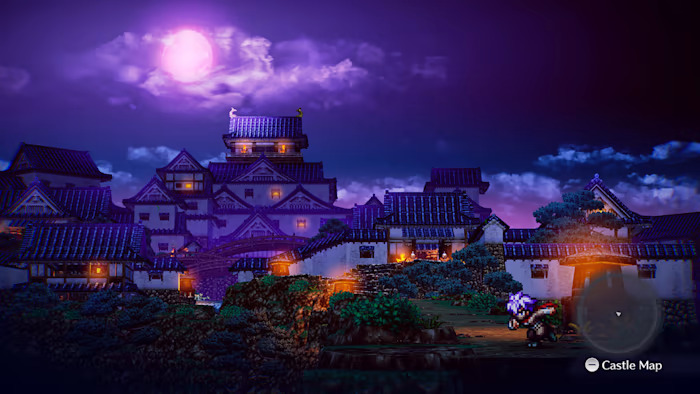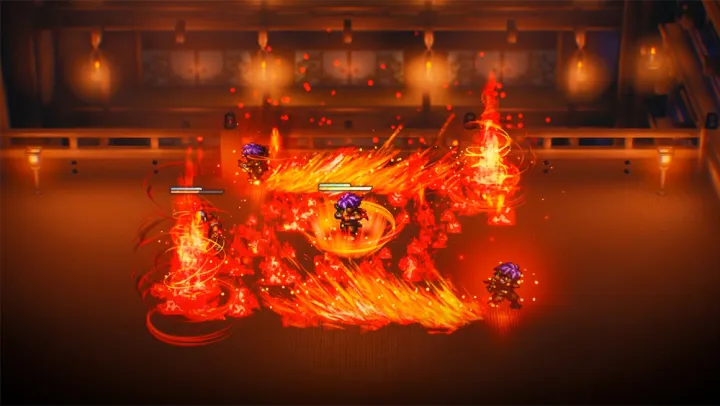The Nintendo Switch got a pair of high-profile role-playing games this month, but they couldn’t be more dissimilar. Live A Live is a remake of an influential 90s game that features retro visuals, turn-based tactical combat, and a breezy runtime. Xenoblade Chronicles 3, on the other hand, is a behemoth of an action-RPG that features a bevy of complex systems rolled out over a 150-hour adventure. It’s a tale of two RPGs.
Like many Switch owners, I plan to hop into Xenoblade Chronicles 3 today, but Live A Live is the game that currently has my attention. The HD-2D remake is an uneven experience, but it’s been a surprise charmer for me thanks to its clever storytelling and experimental structure. While the original release had an influence on RPG-makers (Octopath Traveler more or less plays like a spiritual successor), it’s still unlike anything I’ve ever really played in the genre.
Throughout my playthrough, I’ve found myself wishing more RPGs would take lessons from it. Even two decades after it first released in Japan, Live A Live’s manageable pace and eagerness to constantly show players something new makes it feel like a breath of fresh air in an era of titanic stories that tend to drag on.
Live and learn
The first thing that especially stands out about Live A Live is that it’s the rare RPG that you can beat in a week. Clocking in at around 20 hours, it’s a relic from a time when the genre wasn’t as focused on delivering some of the longest experiences in gaming. That’s a relief as someone who likes to play a lot of games, but it isn’t just my personal time that benefits from the slimmer runtime.

With virtually no fluff, Live A Live is able to deliver more focused storytelling and gameplay that doesn’t feel padded out to invent “value.” The adventure unfolds through a series of chapters focused on disparate characters throughout time. Each story is a self-contained tale that takes anywhere between 40 minutes and three hours to complete. You won’t run up against a glut of repetitive battles or need to spend hours grinding to pass a sudden difficulty spike. Instead, Live A Live wants you to sample a platter of characters, settings, and systems, not weigh you down with a dense meal.
That approach solves my biggest pet peeve with the RPG genre — and even video games as a whole. Modern games rarely justify their long runtimes. With many RPGs in particular, I often feel like I can learn everything the game has to teach me within 10 or 20 hours. Take last year’s exceptional Tales of Arise, for instance. The game has a strong opening as it carefully layers in new characters, systems, and attacks to experiment with. But by the halfway mark, my brain went into auto-pilot. Once I figured out the optimal way to play, my eyes glazed over anytime I wasn’t in a story-progressing cutscene.
Live A Live, on the other hand, always has me engaged. Each chapter introduces entirely new ideas, keeping me from zoning out. One chapter has me cutting my way through an intricately designed Japanese castle filled with secret paths. Another is an old Western where I simply need to gather traps to prepare for one big battle against incoming bandits. Stories are unified by a strong grid-based combat system that’s always adapted in a way that feels relevant to each chapter’s setting. In its far future storyline, for instance, combat is presented as a game within a game that’s playable on a spaceship computer. Each individual battle feels plot-motivated with very few feeling like superfluous grinding.

There’s a downside to that approach, too. Some chapters are let down by their slim runtime, as they don’t have space to fully develop their ideas. The game has an ingenious wrestling chapter, where players go through a fighting game-like boss rush, but it blows by so quickly that I couldn’t get invested in its hero. On the flipside, it means that you’re never trapped in a bad section for too long. Dud chapters like the narrative-driven outer-space story are easier to admire for their creative swings when you don’t need to slog through them for more than three hours.
Modern RPGs could take another round of notes from Live A Live now that it’s more widely available via the Switch remake. There’s a lot to learn from the game’s focused game design that cuts down on bloat in service of a more memorable anthology of moments. I’m not saying that I wish Xenoblade Chronicles 3 was 20 hours long; I’m just wondering how much meaningful value that extra 130 hours actually brings.
Live A Live is available now on Nintendo Switch.



